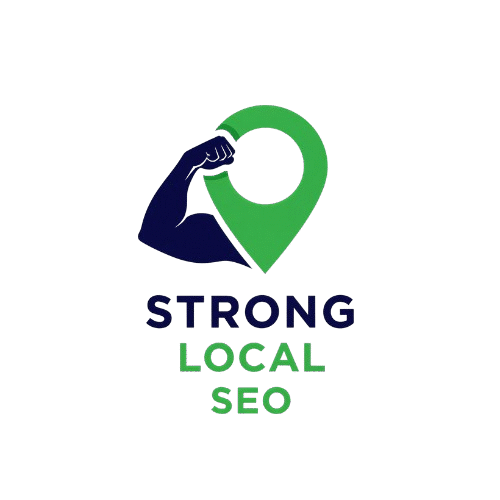If your organic traffic has been dropping recently, you’re not imagining things.
You’ve fine-tuned your content, built quality backlinks, and addressed technical SEO issues – yet the clicks keep declining.
Welcome to the era of Google’s AI Overviews, where the search engine isn’t just directing traffic to your site anymore – it’s becoming the final stop for users.
And for SEOs, that’s a massive problem.
Let’s break down why AI Overviews are silently draining organic traffic, how this change is altering user search habits, and most crucially – how you can adjust your strategy before it’s too late.
What Are Google’s AI Overviews?
Previously called the Search Generative Experience (SGE), AI Overviews represent Google’s newest approach to AI-driven search results.
Rather than displaying the usual list of links with short descriptions, Google now delivers AI-generated summaries that compile information from various websites – often eliminating the need for users to click on anything.
Picture searching for “best protein for muscle gain” and, instead of browsing multiple articles, you’re given an instant, AI-crafted response – occasionally citing sources, but usually leaving little reason to visit those sites.
While this is convenient for users, it’s a serious blow to websites that rely on organic traffic for visibility and growth.
Why AI Overviews Are Killing Clicks
1. The Zero-Click Phenomenon, Supercharged
We’ve encountered this trend with things like Featured Snippets, Knowledge Panels, and the People Also Ask sections – but AI Overviews push it even further.
When users are presented with a complete, well-rounded answer right at the top of the search results, why would they bother clicking through to a website?
According to recent findings from SparkToro, more than 65% of searches already end without a single click. With the rise of AI Overviews, that percentage is only expected to climb higher.
2. Source Credit Is Inconsistent
Sometimes, Google lists sources beneath the AI Overview. However:
- The links are small and easily ignored.
- There’s no guarantee your site will be cited, even if you’re the original authority.
You could be providing the information that powers Google’s AI, yet see little to no traffic in return. It’s a tough and lopsided exchange.
3. Changing User Psychology
AI Overviews train users to rely on Google’s summarized answers instead of exploring multiple viewpoints or in-depth content on individual sites.
Over time, this changes how people interact with search, reducing the number of users who scroll down to check the traditional organic listings.
What SEOs Must Do Now
We can’t stop Google’s AI train – but we can adapt. Here’s how.
1. Shift Focus to Brand Visibility and Awareness
If Google’s going to surface your content in summaries without driving clicks, it’s crucial that your brand name appears prominently within those key sections.
- Publish authoritative, original research that others cite.
- Collaborate with other thought leaders to get mentions.
- Focus on brand queries – if users search your brand directly, AI Overviews can’t intercept that.
2. Prioritize Content That Can’t Be Summarized Easily
AI is great at summarizing facts, but:
- Personal stories
- In-depth case studies
- Unique expert opinions
- Detailed data analysis
Make your content deep, multi-dimensional, and packed with original insights that can’t be easily condensed into a short AI summary. This way, users will need to visit your site to get the complete story.
3. Optimize for “Cited in AI Overviews”
We’re stepping into an unusual new phase of SEO: tailoring your content to get cited within AI-generated summaries.
Though Google hasn’t revealed the precise criteria for source citations in AI summaries, early insights indicate a few likely factors:
- Authoritative domains with high E-E-A-T (Experience, Expertise, Authoritativeness, Trustworthiness)
- Clear, well-structured content
- Updated, accurate information
It’s no longer just about ranking – it’s about being reference-worthy to an AI.
4. Enhance Your Site’s Retention & Engagement
If you do get a click from an AI Overview, make sure your site wows the user.
- Fast loading, mobile-first design
- Interactive elements like calculators, quizzes, or tools
- Exclusive content behind clicks (e.g., downloadable guides, video explainers)
Don’t just optimize for traffic – optimize for experience and retention.
5. Explore Alternative Traffic Channels
Relying solely on Google search traffic is riskier than ever.
- Build an email list: Own your audience.
- Double down on social media: Platforms like LinkedIn, YouTube, and TikTok drive direct engagement.
- Leverage community spaces: Reddit, Quora, niche forums.
A diversified traffic strategy insulates your brand from Google’s whims.
Final Thoughts: The SEO Paradigm Has Shifted
Google’s AI Overviews mark more than just a new feature – they represent a major transformation in how people consume information online.
The traditional SEO strategy of securing the #1 spot and expecting traffic to follow no longer holds up. The new game is about earning citations in AI responses, strengthening your brand presence, and creating content that AI can’t easily replicate.
This isn’t the death of SEO, but it’s definitely the end of SEO as we’ve known it.
Adapt now to stay in the game – wait too long, and your organic traffic could vanish for good.

